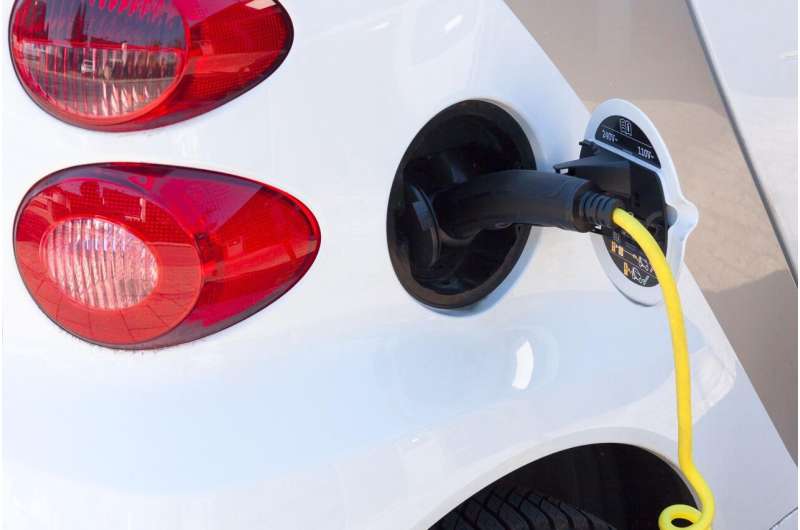Chemists pin down the cause for energy losses in high-capacity lithium-ion battery cathodes

An international team, which included Skoltech researchers and their colleagues from France, the United States, and Switzerland, found out why energy losses occur during the charge-discharge cycle in lithium-ion batteries with cathodes made from complex lithium-rich oxides of transition metals. Published in Nature Materials, the new study shows that the difference in the charge-discharge operating voltage leading to low energy efficiency is due to long-lived kinetically hindered intermediate species of nickel.
The fast-growing electric vehicle industry needs lithium-ion batteries with higher energy density to deliver electric cars that travel farther on one charge. Next-generation traction batteries can be created on the basis of advanced cathode materials, such as Li-rich complex oxides of transition metals, which hold the current record for specific capacity by virtue of both the cations of transition metals (nickel and cobalt) and the oxygen anions being involved in redox reactions. However, voltage hysteresis—the difference in charge and discharge voltages—leads to energy losses during battery operation and limits practical applications.
“During the charge-up of a Li-ion battery, positively charged lithium cations leave their sites in the cathode material structure and then settle back in when the battery is discharged. For the cathode material to remain electrically neutral, it should release or take in the same number of electrons. Our study shows that kinetic hindrances and energy barriers are caused to a large extent by the electron transfer and not just the migration of lithium cations. The transfer of electrons between metal cations and oxygen atoms can be particularly sluggish, leading to energy losses,” professor Artem Abakumov, the director of the Skoltech Center for Energy Science and Technology (CEST), explains.
“To capture those long-lived electronic states, we started by ruling out other possible reasons for hysteresis, such as changes in the cathode’s crystal structure caused by the migration of transition metal cations. Thanks to high-resolution transmission electron microscopy—namely, the Titan Themis Z microscope at the Advanced Imaging Core Facility—we provided rock-solid evidence that such irreversible processes do not occur. Titan Themis Z boasts a spatial resolution of up to 0.06 nm, which means that we can get atomic-resolution images of crystal structures,” Skoltech Ph.D. student Anatolii Morozov says.
“Our microscope is a materials science lab in its own right, enabling the analysis of materials with various high-locality methods. In our research, we not only used the images of structures, but also performed a spectral analysis of the electronic state of nickel and titanium cations, as well as oxygen anions in different states of battery charge. Thereby, we found out that it was none other than oxidized nickel cations that formed a long-lived electronic state, a fact subsequently confirmed by other spectroscopy methods,” Skoltech Research Scientist Olga Emelyanova explains.
“Our research brings to light the unique opportunities that modern transmission electron microscopy provides for studying materials of high practical value. Knowledge of the crystal and electronic structure at the local level is crucial for the targeted development of materials with unique functionality. The ability to perform such research is an important competitive advantage of Skoltech,” Yaroslava Shakhova, the head of the Advanced Imaging Core Facility, adds.
A new look at the problem of energy efficiency in lithium-ion batteries
Biao Li et al, Capturing dynamic ligand-to-metal charge transfer with a long-lived cationic intermediate for anionic redox, Nature Materials (2022). DOI: 10.1038/s41563-022-01278-2
Citation:
Chemists pin down the cause for energy losses in high-capacity lithium-ion battery cathodes (2022, June 21)
retrieved 21 June 2022
from https://techxplore.com/news/2022-06-chemists-pin-energy-losses-high-capacity.html
This document is subject to copyright. Apart from any fair dealing for the purpose of private study or research, no
part may be reproduced without the written permission. The content is provided for information purposes only.
For all the latest Technology News Click Here
For the latest news and updates, follow us on Google News.

